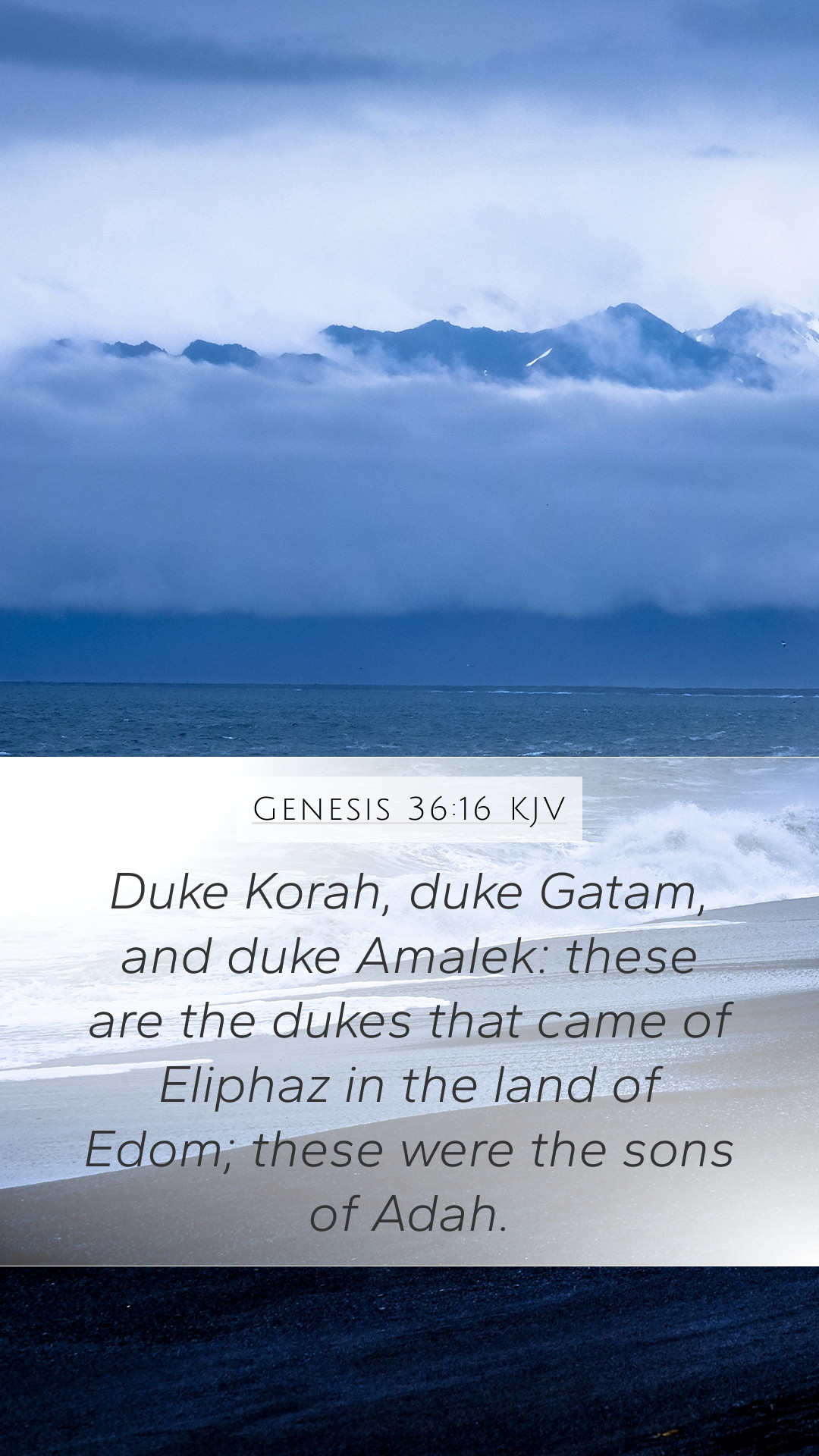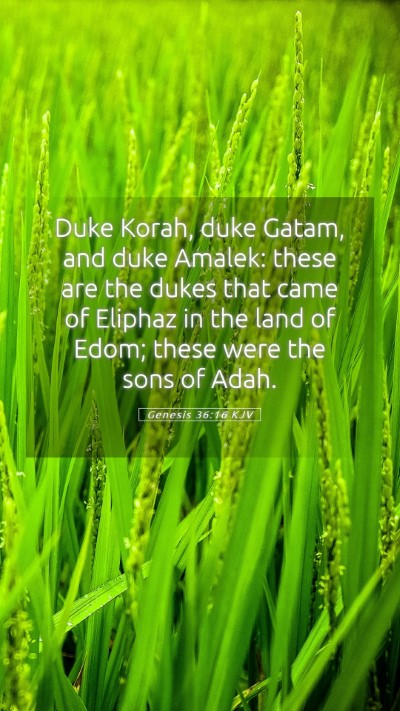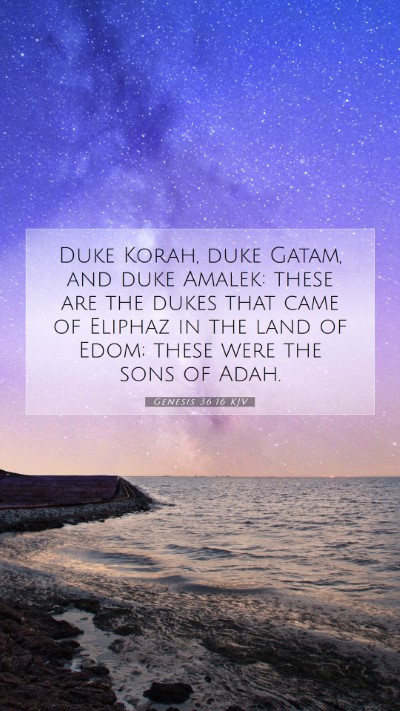Understanding Genesis 36:16 - Bible Verse Meaning and Commentary
Genesis 36:16 states: "Duke Korah, Duke Gatam, and Duke Amalek; these are the dukes that came of Eliphaz in the land of Edom; these were the sons of Adah."
This verse is part of a genealogical account that documents the lineage of Esau and the development of the Edomite nation. Below, we provide a comprehensive analysis combining insights from various public domain commentaries, offering a deeper understanding of its meaning.
Bible Verse Interpretations and Commentary
The verse lists key figures associated with Esau’s lineage, emphasizing the prominent dukes that descended from him. The names mentioned—Korah, Gatam, and Amalek—represent distinct tribes or clans within Edom. Each of these dukes signifies the emergence of noble families that played essential roles in the historical narrative of the Edomites.
- Historical Context: The genealogy outlined in Genesis 36 serves to highlight the broader historical context of the Israelite and Edomite peoples. Understanding these relationships is vital for biblical exegesis.
- Significance of Dukes: The term 'duke' signifies authority and leadership among these clans, indicating their regional influence and governance in Edom.
- Eliphaz's Lineage: Eliphaz, the son of Esau, is a significant figure, as his descendants became established leaders among the Edomites, showcasing the fulfillment of God’s promise to Esau regarding the development of nations from him.
In-Depth Analysis of Key Terms
Examining the names and titles within this verse, we gain insights into the social and political structures of the time:
- Korah: Often associated with challenges to authority in biblical narratives, Korah's name may evoke reflections on rebellion and leadership.
- Gatam: The lesser-known figure, Gatam, represents the lesser-explored branches of Esau’s lineage, indicating how many smaller tribes formed from these original families.
- Amalek: Amalek is particularly noteworthy as his descendants would later become significant adversaries of Israel, emphasizing the ongoing conflict between these two nations.
Understanding Scripture Through Cross References
For deeper understanding and application of Genesis 36:16, consider related verses that provide context and enrich the narrative:
- Genesis 25:30-34: Discusses the birthright of Esau and Jacob, highlighting the foundation of the conflict between these two nations.
- Deuteronomy 2:1-7: Outlines God's instructions regarding the Edomites, contributing to understanding Israel’s relationship with Edom.
- 1 Samuel 15:2-3: Explains God’s command regarding the Amalekites, linking back to their origins in this passage.
Application of the Verse to Daily Life
In studying this Bible verse and its surrounding context, individuals can draw several applications:
- Understanding Heritage: Acknowledging one’s roots and the legacy of family can guide moral and ethical decisions.
- Leadership and Authority: The responsibilities of leadership are examined, pertinent to discussions in Bible study groups regarding governance.
- Conflict Resolution: Recognizing the historical tensions between descendants may inform modern inter-personal and community conflicts.
Conclusion
The exploration of Genesis 36:16 reveals vital insights into the development of early nations and their interrelationships, providing rich material for Bible study resources, discussions, and personal reflection. Engage with this scripture, considering its implications for both historical understanding and contemporary life applications.
In preparation for discussions in online Bible study or personal reflection, consider these points for further meditation and exploration:
- How does understanding the lineage of Esau clarify our understanding of Jewish and Edomite history?
- What parallels can be drawn between the conflicts of ancient peoples and modern-day conflicts?


